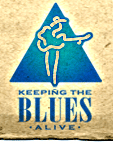Artists – Get Involved In The Schools!
Artists can enrich the arts as well as all other instructional areas in the schools. But, how does a school or artist, accomplish this joint enrichment of the education program?
The contact and the idea for a classroom enrichment project must come first. Sometimes an artist initiates a discussion with a teacher or parents regarding an idea for including instruction in some art form, for a performance, for a demonstration, for participation of some kind.
The artist and the teacher jointly develop how the experience might be handled to create the greatest learning impact. How will the experience integrate with the school’s curriculum? Do additional persons need to be present for support? Do the children need special materials or skills? Are the ancillary learning opportunities which relate to the critical thinking skills required in the arts experience?
When the idea is developed to the satisfaction of both the teacher and the artist, including cost estimates and expectations, various funding sources may be approached with a proposal for sponsorship. Those sources could include the state and local arts councils, local art support clubs /societies, local businesses, the Parent Teacher Organizations, families, community service clubs. Grants are available on federal, state, and local levels, and are frequently listed in newspapers, and art council publications.
Once the funding has been secured, in-depth, on -site planning can occur.
Mary Beth Schroeder, Arts Consultant, Iowa Department of Education, agrees such contrasts are the beginning of a much needed impact on education at every level of the arts.
“Not only are artists a resource for enrichment in the classroom, but their artwork or performances are also a resource from which educators can teach,” said Schroeder. “Having a basic arts education curriculum is presently minimum standard. But it’s not enough, and it is always the first area of education to receive cuts when funding is not sufficient. We need the increased participation of communities at the local level. There is so much in the communities that can serve as resources to add to the basic curriculum. School administrators do not generally have backgrounds in the arts, and they are often overburdened with their multiple responsibilities. Community support for arts enrichment experiences would have a strong positive impact on the schools,” she said.
The arts provide a sensory learning experience, the kind of hands-on experience many children need but do not get. They also impact the critical thinking skills, incorporating such processes as critiques, self assessment, review and reflection.
In order to bring such valuable experiences into the classroom, Schroeder sees five different connections that need to be made.
1) Connecting other subject area content to the arts experience. The Council for Basic Education publishes interdisciplinary suggestions to include arts in other subjects. For example, using various visual or performing arts to illustrate periods of history, social attitudes or cultural heritages, thus tying social studies, government and history subject areas to the arts; ceramics sculptors using scales, chemicals, measurements, proportional relationships, and firing techniques illustrating science and math principles; architects and musicians use symbol systems – math learning concepts; and a professional dancer or musician must commit much sequential learning to memory – a great example of cognitive processing and physical memory.
2) Teachers need to teach life skills. Youth need to demonstrate that they have learned skills that promote equity in a diverse society. Arts can help the learner understand various expressions of the human experience. They can help children develop sensitivity towards those that are different, by identifying common experiences. The arts help students find personal meaning in their lives – helping develop lifelong interests. Problem-solving skills are learned when creating art, by learning to use limited resources in innovative ways. Businesses today are seeking qualified individuals with these skills.
3) Teachers and artists must be encouraged to communicate with each other at a very pragmatic level. Often this simply means getting acquainted with each other,learning to share needs and valuing each other’s abilities.
4) The arts project needs to provide both the opportunity for self-expression and for follow-up learning, integrating the experience rather than isolating it.
The teacher, with the cooperation of the artist, needs to be able to continue the arts experience after the artist is gone. This links learning skills of the demonstrated art to other subject areas, building a series of lessons. Kids can be very creative in recognizing and translating these skills to other areas.
5) The teacher and artist need to agree to speak a common language, learning the terms which each uses to describe their processes of teaching and learning.
Understanding the differing viewpoints with which each approaches the process of learning may help them to communicate with each other.
Submitted by Blues Foundation on February 27, 2004
Iowa Arts News, vol. 25


No Comments
No comments yet.
RSS feed for comments on this post.
Sorry, the comment form is closed at this time.